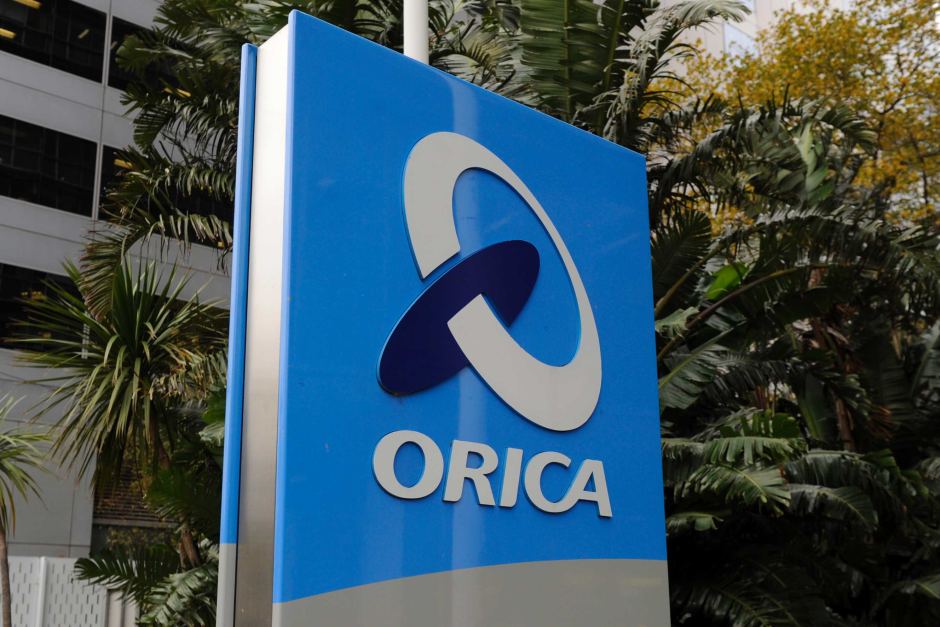Category: Business, Economics and Finance / Company News / Mining Industry
Explosives maker Orica bounces back with a $340 million profit, but conditions still tough
Friday, 4 Nov 2016 07:57:37 | Stephen Letts

Orica's full year dividend was almost halved to 49.5 cents per share. (AAP Image: Julian Smith)
The world's largest explosives maker, Orica, has swung back to a full year $343 million profit, a $1.6 billion turn-around from last year's impairment ravaged loss.
However, on an underlying basis — with one-off gains and losses removed — the profit of $389 million was down 7 per cent down compared to 2015.
Orica's 2016 reporting period does not take in the recent surge in activity in key mining activities such as coal and iron-ore mining.
The decline in earnings across Australia, North America and Latin America was due to lower demand and bad weather affecting mining operations.
Increased sales across Africa and the Commonwealth of Independent States (former Soviet republics), to a degree, offset weakness elsewhere.
The full-year dividend was almost halved from 96 cents per share (cps) to 49.5 cps, to be right in the middle of the company's new, more sustainable dividend payout ratio band of between 40 and 70 per cent of earnings.
The company reined in its capital expenditure, down $60 million on expectations, and cut net debt by $500 million, or around 25 per cent.
Further cost cutting and Barrup start-up likely to be delayed
Orica chief executive Alberto Calderon said while there has been some external optimism on market conditions, he remained conservative in terms of outlook.
"The 2016 fiscal year continued to be affected by challenging and volatile market conditions," Mr Calderon said.
"By continuing to actively manage all the elements of our business that are within our control, we were able to significantly offset market impacts to deliver a strong result."
Mr Calderon said the focus in 2017 would be boosting margins through cutting manufacturing costs and corporate overheads.
Ammonium nitrate and cyanide volumes were forecast to be flat compared to this year, while the company said it expected to face input cost headwinds of around $60 million.
Orica has been hit with the dual problems of a global oversupply of ammonium nitrate — with Australian prices falling between 15 and 20 per cent and struggling miners attempting to force prices down further — and higher costs in key inputs such as gas.
While volumes appear to have stabilised and pockets of strength have emerged, particularly in coal and the Pilbara, serious challenges remain, including with the start-up of its West Australian joint venture at Barrup.
The Barrup plant, which is operated by majority owner Yara, will have the capacity to produce 360,000 tonnes of ammonium nitrate per year but questions remain about it profitability in current conditions.
Mr Calderon said commissioning issues relating to the plant were currently being addressed by Yara.
"Orica is currently evaluating all options for the plant for the delivery of economic returns," he said.
RBC analyst Andrew Scott said the result was solid if somewhat unexciting and in line with expectations.
"We believe that the market will focus on the outlook and, while there are a number of moving parts, that suggests something close to a flat year-on-year outcome in our view," Mr Scott said.
Mr Scott said the company's statement on Barrup left more questions than answers, but probably implied a delay to the planned start-up was under consideration.
- About Us
- |
- Terms of Use
- |
-
 RSS
RSS - |
- Privacy Policy
- |
- Contact Us
- |
- Shanghai Call Center: 962288
- |
- Tip-off hotline: 52920043
- 沪ICP证:沪ICP备05050403号-1
- |
- 互联网新闻信息服务许可证:31120180004
- |
- 网络视听许可证:0909346
- |
- 广播电视节目制作许可证:沪字第354号
- |
- 增值电信业务经营许可证:沪B2-20120012
Copyright © 1999- Shanghai Daily. All rights reserved.Preferably viewed with Internet Explorer 8 or newer browsers.




 Send to Kindle
Send to Kindle